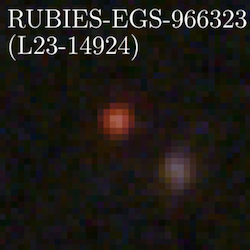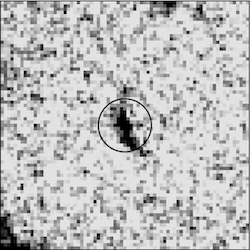Bingjie Wang / 王冰洁
Astrophysicist
RESEARCH
galaxy formation and evolution / active galactic nucleus / bayesian inference / simulation-based inference
With the launch of a flagship observatory, new parameter spaces in the populations of galaxies and active galactic nuclei are almost always uncovered — regions that push beyond the limits that existing models can address. Expanding these boundaries by building new models and tools to interpret the data is the central theme of my research program.
I have pioneered a method that directly encodes data-driven constraints on galaxy evolution into the inference process (Prospector-β), which has proven to be instrumental in maximizing the scientific returns from JWST surveys. Building on this, I have identified some of the most distant galaxies known to date. More recently, I've been focused on characterizing the population of compact, red sources known as ``little red dots" (LRD) -- a discovery and a puzzle in the JWST era. I led some of the earliest spectroscopic studies, including an unusually bright LRD lacking hot dust emission, and first NIRSpec observations of high-z LRDs that were initially intrepreted as massive galaxies.
In parallel, I have worked on and share a deep interest in machine-learning-empowered inference techniques and population models for star formation timescales.
My Ph.D. thesis centers on the escape of ionizing radiation and galactic outflows (slides from my AAS dissertation talk). The former concerns the processes in early galaxies that enable a substantial fraction of their Lyman-continuum radiation to escape the dense interstellar medium, driving the cosmic reionization. The latter is on the physical processes governing starburst-driven outflows, which are often invoked as the principal feedback mechanism in models of galaxy formation and evolution.
I have also collaborated on projects on early universe cosmology, such as understanding large-angle anomalies in the Cosmic Microwave Background and developing analysis pipelines for the Cosmology Large Angular Scale Surveyor.
Press
• Media coverage of lead-author works:
Trio of early galaxies test our ideas of cosmic evolution; Sky & Telescope
Too many stars, too fast?; AAS NOVA research highlights
(see also the PSU release; Space.com, The Independent, ...)
JWST discovery of the second- and fourth-most distant galaxies; PSU release (Space.com, Newsweek, Daily Mail, ...)
JWST uncovers new details in Pandora’s Cluster; NASA/STScI/PSU release
[SII] deficiency and the leakage of ionizing radiation; AAS journal author series
Tracing gas flows out of star-forming galaxies; AAS NOVA research highlights
• Expert comments for:
BBC,
New Scientist,
Sky & Telescope.
• Selected other media coverage:
NASA telescopes discover record-breaking black hole; NASA release (CNN, ...)
Massive early galaxies defy prior understanding of the universe; NASA/Nature/ANU/PSU release (CNN, the Guardian, NPR, ...)

First-Author Publications
11 papers (as of 05/2024; click here to view in ADS)
Img: composite image of a "little red dot", at spec-z=8.35, exhibiting a spectral break resembling a signature of old stars in the young universe; Wang et al 2024.

All Publications
55 in total (as of 05/2024; click here to view in ADS)
Img: cutout of one of the most distant galaxies ever observed, at spec-z = 12.4; Wang et al 2023.